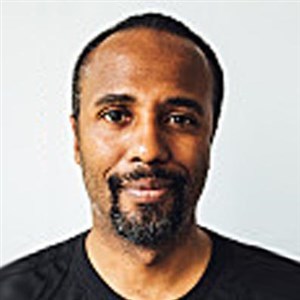The View from ADP: Dynamic Teams and What It Means For Workplace Culture

The concept of dynamic teams has had a profound impact on the culture at ADP.
For employees in many organizations, their workplace is organized in a hierarchical fashion. There's a clear structure that tells people who reports to whom, who's in charge of what resources and how information should flow.
But is that model the most effective? ADP has discovered that implementing a dynamic teams approach works best for their employee population.
Dynamic Teams in Action
Within the matrix relationships that come with dynamic teams, there are still formal reporting lines like human resources, legal and IT, but when it comes to the actual work relating to products and sales, these silos cross over formal boundaries to support projects or objectives. This changes the nature of direct and indirect reporting. For example, when a senior leader is assigned a project and a team to help execute it, the team will include some direct reports within the leader's traditional team and others who are not. This can result in more diverse perspectives and skill sets collaborating to complete the project.
Jay Caldwell, Vice President, Human Resources, Global Product and Technology at ADP, says ADP used to be organized in the more traditional fashion because it had a more diverse offering of products and services. That began to change around five years ago when Carlos Rodriguez, ADP's CEO, decided to go "all in on HCM" (human capital management), according to Caldwell. The focus shifted to figuring out where the organization's business units and functions had things in common, and in some cases made structural changes. This realignment allowed for more functional hardlines, with more matrix-style teams to be implemented across the enterprise, and this structure is seen as a more effective way to operate.
A "Radical Shift"
Caldwell says dynamic teams represent "a radical shift for the culture," so working in this fashion can be challenging for leaders.
"There's a certain comfort that comes from hardline reporting relationships, partly because it gives managers the ability to better direct their team and resources," says Caldwell. "In a matrix environment, you're working more through influence and alignment to get things done, rather than control."
So how do leaders need to change? Caldwell highlights that network leaders should be comfortable operating within a tangled web as opposed to a hierarchical structure. They will have fewer direct reports yet more stakeholders involved. Working with dynamic teams in this fashion will require patience, effective communication skills — you may need to communicate more to reach a decision — and influencer skills in order to make sure everyone's on the same page.
"This hasn't been a process change; this has been a culture change"
- Jay Caldwell, Vice President, Human Resources, Global Product and Technology at ADP
Having key metrics that can be tracked can be helpful for gauging the effectiveness of dynamic teams. At ADP, they look at engagement. Caldwell says that because they use ADP's own talent activation solution, he and his team leaders know that teams are having more coaching conversations, and they can actually measure engagement in these dynamic teams, rather than just the formal hierarchy. The dynamic team approach has changed the course of those conversations because team members can be on multiple dynamic teams. Their feedback is that they're connecting with matrix leaders in new and impactful ways – sometimes in even more stronger ways than with their formal leaders.
Team leaders say the approach has led to them getting to know their team members more quickly, which allows them to stay on top of how team members are doing. As Caldwell puts it, this constant review helps with "building trusting relationships in a faster way." With stronger trust, team leaders can build on the influence and alignment they need in the dynamic team environment. And with the majority of ADP's workforce currently working remotely during COVID-19, building trust is even more critical. "Providing tools that can help leaders connect with team members that don't report to them, and they've never met in person, is more important than ever" says Caldwell.
"This hasn't been a process change; this has been a culture change," Caldwell says of how things get done at ADP. And the work isn't stopping with dynamic teams. The organization is currently rethinking all approaches in human resources (recruitment, performance management) with a strengths-based focus — i.e., what do associates love to do and how can the business enable them to do more of that?
Dynamic teams can allow other organizations to better leverage their strengths because it gives more opportunity to apply those strengths in new and different ways. This requires matrix leaders to get back to the basics of leadership in a new environment - getting to know those on their team and motivating them to do great work.
Go Deeper
Read the 5 ways leaders can improve their teams
Learn about Life@ADP.



